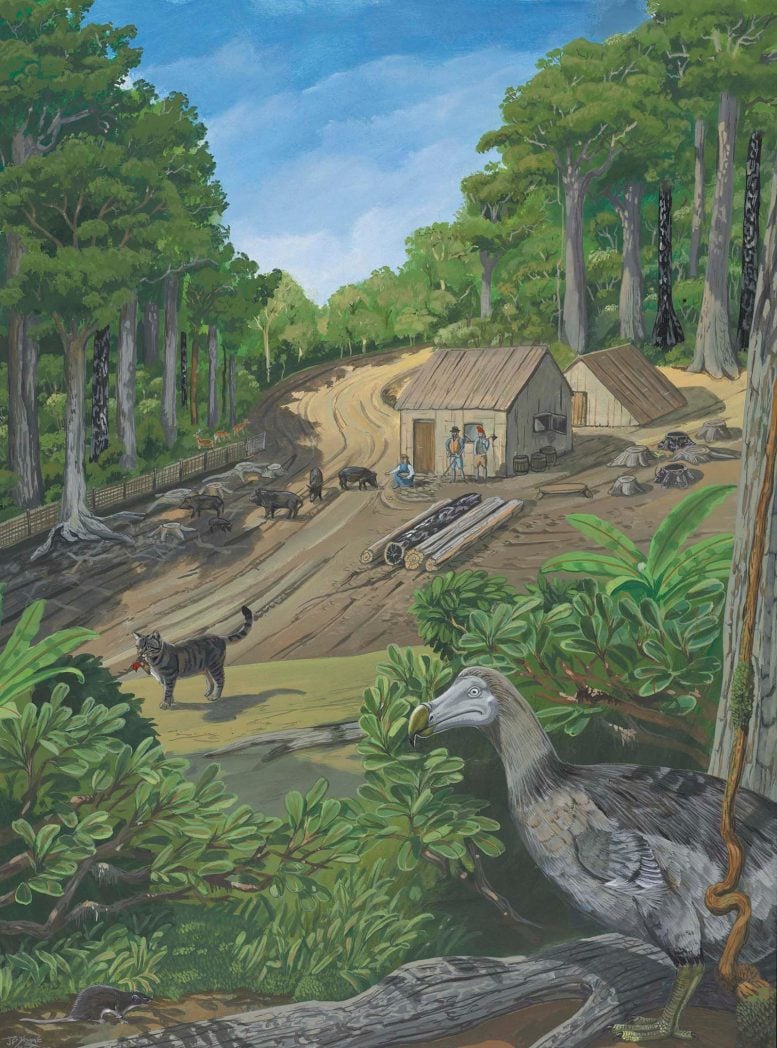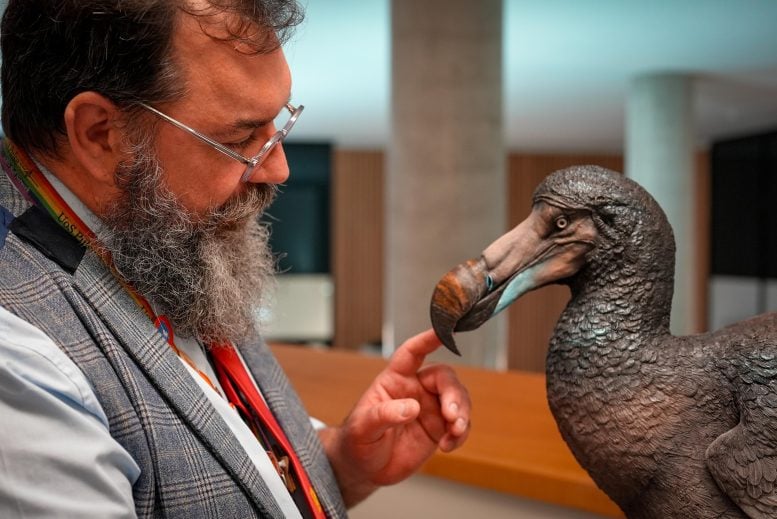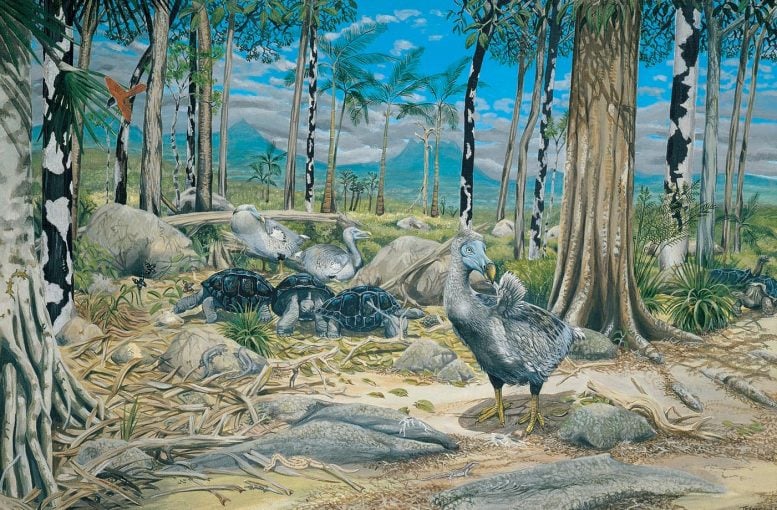Recent research corrects misconceptions about the dodo, portraying it as a graceful and adaptable bird, and uses historical analysis to aid contemporary conservation efforts.
The dodo is often portrayed as a slow, clumsy bird destined for extinction. However, new research from the University of Southampton, the Natural History Museum and the Oxford University Museum reveals that this could not be further from the truth.
In a study published on August 16 in Zoological Journal of the Linnaean SocietyResearchers have conducted a comprehensive review of the taxonomy of the dodo and its closest relative, the Rodrigues Island solitaire, correcting centuries of misconceptions and myths.
They reviewed 400 years of scientific literature and visited collections across the UK to confirm this symbol. Classwhich embodies humanity’s destructive potential, has been correctly classified.
Correcting historical misconceptions
“The dodo was the first living creature recorded to have existed and then disappeared,” said Dr Neil Gostling of the University of Southampton, who led the research. “Before then, it was not thought possible for humans to influence God’s creation in this way.”
“This was at a time when the scientific principles and systems on which we classify and categorize species did not exist. Both the dodo and the solitaire bird disappeared before we had a chance to understand what we were looking at.”

Misconceptions and myths
Much of what has been written about the dodo and the solitaire has been based on Dutch sailors’ accounts, artists’ representations, and incomplete remains.
The lack of a definitive reference point (a type specimen) or convention for naming species (zoological nomenclature) led to a series of misidentifications in the centuries following their extinction. New species were named, such as the Nassaurian dodo, the white dodo, and the white solitary bird, but research confirms that none of these creatures existed. Nevertheless, these erroneous “pebbles” sent ripples through the waters of zoological literature.

Clearing up the confusion about species
“By the 18th and early 19th centuries, the dodo and the solitaire were seen as mythical monsters,” said Dr Mark Young, lead author of the paper from the University of Southampton. “It was the painstaking work of Victorian scientists that finally proved that the dodo and solitaire were not mythical but rather giant ground pigeons.”
“Unfortunately, no one could agree on how many species there were,” Dr. Young adds. “For most of the 19th and 20th centuries, researchers thought there were three different species, although some people thought there were four or even five different species.”
To resolve the confusion, the researchers reviewed all the literature on the dodo and Rodriguez Solitaire, including hundreds of accounts dating back to 1598, and visited specimens across the UK, including the world’s only remaining soft tissue specimen of a dodo, held at the Oxford Museum.
Listen to audio clips of Dr Neil Gostling discussing the research. Image credit: University of Southampton
“More has been written about the dodo than any other bird, yet almost nothing is known about its life,” says Dr Julian Hume, an ornithologist at the Natural History Museum and co-author of the study.
“Based on centuries of naming confusion, and nearly 400 years after their extinction, the dodo and solitaire continue to generate heated debate. We have gone from where the first data came from, seen how that data has evolved, and identified several gaps to correct the record, as best we can.”
Through this work, the researchers were able to confirm that both birds were members of the Reds (The pigeon and dove family).
“Understanding the broader relationships between pigeons and other pigeons is of taxonomic importance, but from a conservation perspective, the loss of the dodo and the lone bird after a few decades means the loss of a unique branch of the pigeon family tree,” says Dr Gostling. “There are no other birds alive today that are as large as these two giant ground pigeon species.”

Rediscovering the true nature of the dodo
Researchers believe the popular idea of the dodo as a fat, slow, and endangered animal is a misconception.
“Even after four centuries, we still have a lot to learn about these magnificent birds,” says Dr Young. “Was the dodo really the slow, clumsy animal we have been led to believe it was? The few written accounts of living dodos say it was a fast-moving, forest-loving animal.”
“Evidence from bone samples suggests that the dodo’s tendon that closed its toes was exceptionally strong, similar to that of birds that climb and run alive today,” adds Dr Gostling. “The dodo was certainly a very active and fast animal.”
“These creatures were perfectly adapted to their environment, but the islands on which they lived lacked mammalian predators. So when humans arrived, bringing with them rats, cats and pigs, the dodo and the solitaire had no chance of survival.
“Dodos occupied a fundamental place in their ecosystems. If we can understand them, we may be able to support the recovery of the Mauritian ecosystem, and perhaps begin to repair the damage that began with the arrival of humans nearly half a millennium ago.”
Future research and conservation efforts
The study represents the beginning of a broader project to understand the biology of these iconic animals.
“The mystery of the dodo is about to be solved,” says Dr Markus Heller, professor of biomechanics at the University of Southampton and co-author of the paper.
“We have assembled an amazing team of scientists to uncover the true nature of this iconic extinct bird. But we are not just looking back in time – our research can help save endangered birds today, too.”
“Using the latest computer technology, we are gathering information about how the dodo lived and moved,” explains Dr Heller. “This is not just to satisfy our curiosity. By understanding how birds evolved in the past, we are learning valuable lessons that can help protect bird species today.”
“It’s like solving a 300-year-old puzzle, and the solution could help us prevent more birds from going the same way as the dodo.”
The project will involve working with artist Karen Fawcett, who created a life-size, detailed model of the dodo to bring words to life on the pages of books and newspaper articles. “This work was a fusion of science and art to achieve our goal of making the world a better place,” she says. accuracy “And so realistic that these creatures come back from the dead, so real and tangible that people can touch them and see them.”
Reference: “Taxonomy and nomenclature of the dodo and solitary bird (Aves: Columbidae), and an overview of the names of the family groups of the Columbidae” by Mark T. Young, Julian B. Hume, Michael O. Day, Robert B. Douglas, Zoe M. Simmons, Judith White, Marcus O. Heller, and Neil J. Gostling, 16 August 2024, Zoological Journal of the Linnaean Society.
doi: 10.1093/zolynnian/zlae086
This work is supported by the Institute of Life Sciences, University of Southampton.

“Infuriatingly humble alcohol fanatic. Unapologetic beer practitioner. Analyst.”
